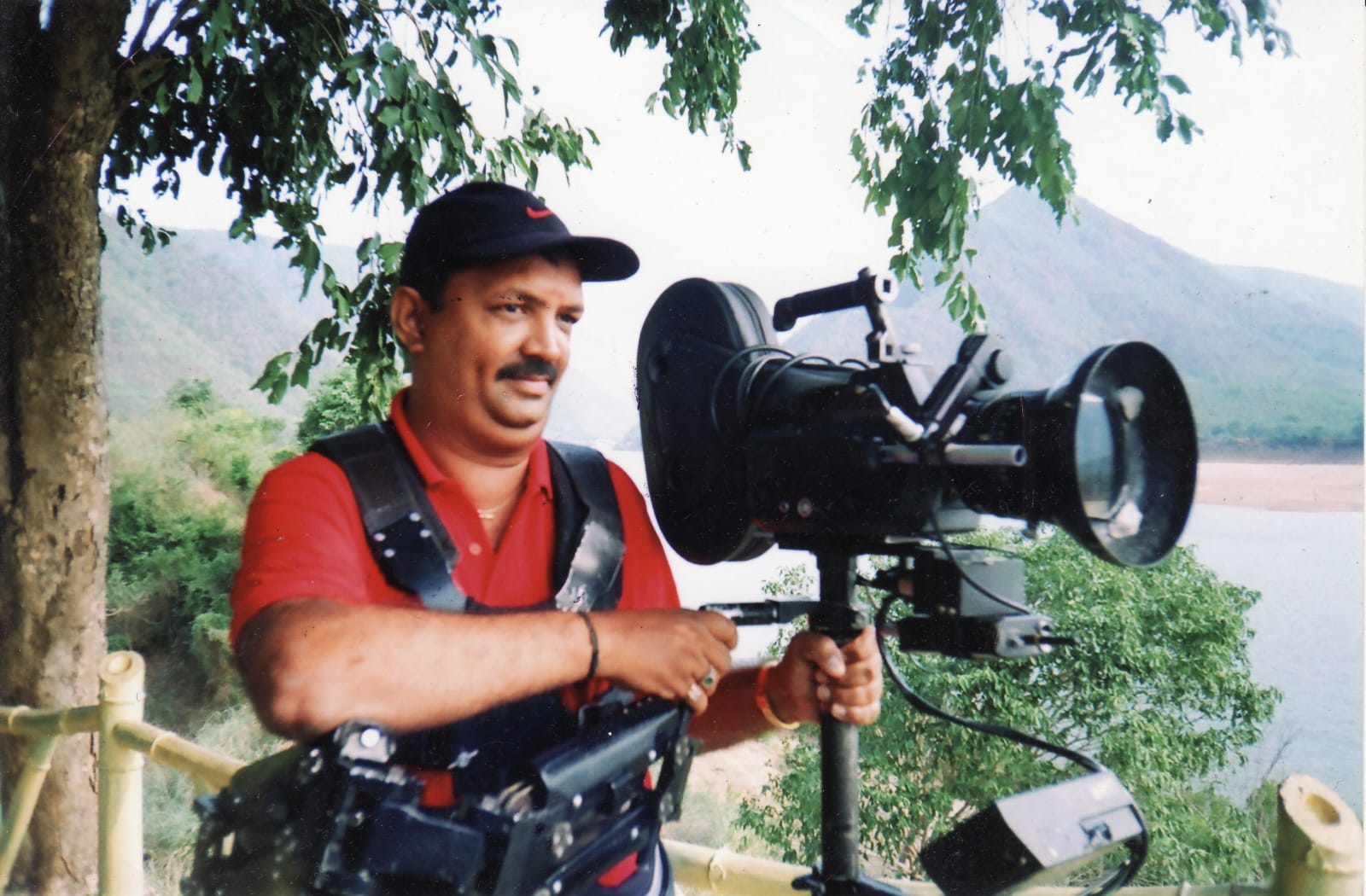
In Conversation : Cinematographer Naga Saravanan!
Nov 17 2024
Naga Saravanan is a pioneering cinematographer who played a key role in the rise of electronic cinematography during the 1980s. The son of legendary cinematographer P.L. Nagappan, he has worked on over 90 serial projects in Tamil, Telugu and Kannada, four feature films, and numerous iconic advertisements. Known for his innovative lighting techniques and technical expertise, Naga Saravanan has received accolades, including the Roll of Honour from the Mylapore Academy, for his significant contributions to the field.
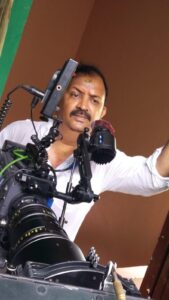
He shares his visual journey and memories of his father, Legendary Cinematographer PL Nagappan.
Naga Saravanan sir, thank you for joining us. Could you begin by telling us about your legendary father, PL Nagappan, and his early life?
My father, PL Nagappan, was a remarkable man who carved his way into the world of cinema through sheer passion and dedication. He started his journey with a Diploma in Automobile Engineering. During his internship in Madras, he worked at an automobile company and, during weekends, visited a film studio through a relative. The world of cinema fascinated him, and his frequent visits eventually caught the attention of the studio professionals. They saw his sharpness and offered him a job. Without hesitation, he accepted.
He started as an apprentice, then became an electrician, moved on to operating trolleys, and eventually became an assistant cameraman. His dedication and skill paved the way for him to become an operative cameraman, and finally, a well-known Director of Photography (DOP). At the start of his career itself, he earned a decent monthly remuneration of Rs. 15, working double shifts, which was financially rewarding during those times.


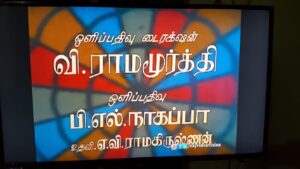
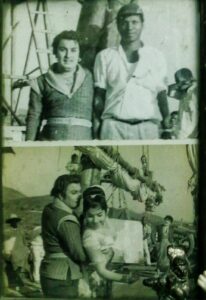
What inspired you to follow in your father’s footsteps and become a cinematographer?
I vividly remember a particular instance during the shooting of the film Ottumaangani, starring Jaishankar. Seeing me on set, Jaishankar advised me to stay away from films and focus on my studies. However, I was already deeply inspired by my father’s career. Watching him in his crisp white attire with black shoes, a car picking him up from home, and people respecting him on set – it all felt like a dream to me.
Although my father wished for me to pursue higher education, my heart was set on cinematography. His journey, dedication, and reputation were my guiding light. I knew I wanted to create a similar path for myself.
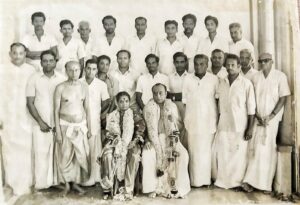
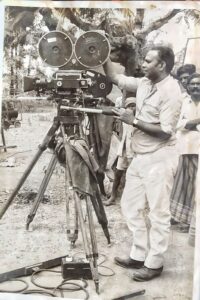
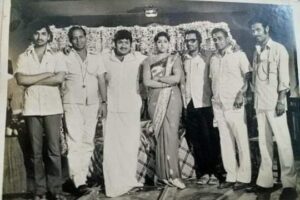
Your father had a breakthrough moment when he worked with BR Banthulu. Can you elaborate on that?
My father was working as an operative cameraman for the esteemed Cinematographer Ramamurthy. During the shoot of a Kannada film directed by BR Banthulu and starring Dr. Rajkumar, there was some unexpected reasons Ramamurthy left the project . Then Director Banthalu handed over the light meter to my father (those days light meter was owned by studios).
Panthulu, who had observed my father’s lighting setups, asked him to continue as the cinematographer. Although hesitant at first, my father stepped up. Panthulu’s wife, actress MV Rajamma, doubted this decision, but Banthulu requested her to wait and see the dailies. After two days, the entire team was amazed by my father’s lighting and shot compositions. From that point on, there was no looking back. My father worked on many films with Banthulu, and their partnership flourished.
What was your father’s unique style in cinematography, and how did it shape his career?
My father’s cinematographic style was distinguished by his ability to create specular lights for large sets, his use of contrast, and his exceptional close-ups. He maintained consistent lighting across his career, which became his trademark. His assistants, including NK Viswanathan, went on to become renowned cinematographers themselves.
He worked on more than 35 films as a cinematographer, collaborating with production houses like Banthulu pictures and other prestigious productions. He had a striking films to his list across all south indian languages.
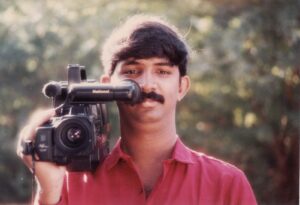

Can you share your own journey into cinematography, especially during the early days of the video era?
After completing my higher secondary education, I began working with my father. However, his health started to decline due to the rigorous schedules he had maintained over the years. Recognizing my passion for cinematography, he decided to place me under Mr.Neelakandan of MR Bros pioneer in video production.
This was during the early days of tape recording and the video era. I became an expert in handling VHS cameras like NV 50, 200, A1 A2 series, N70, and G9, as well as single-tube and 3-CCD high-band cameras. My work gained recognition and got first commercial project through Mrs.Revathi Shankaran the Spencer Cool Drinks advertisement, which I shot with foreign models during night shoots as they were pursuing studies during daytime, Interestingly, the music for that ad was composed by Dileep, who later became the Oscar-winning AR Rahman.
Do you have any memorable anecdotes from your career?
There are many! One unforgettable moment was during the television show Olimayamana Ethirkalam in 1995. Two young ladies, Lakshmi and Saraswathi, observed my work closely and introduced me to their father, SV Ramanan sir, Lakshmi later became the mother of music director Anirudh.
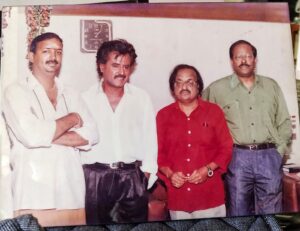
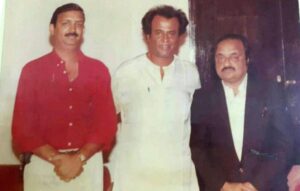
Rajinikanth Interview which was turning point ,?
Yes ..Another cherished memory was shooting an explosive political interview with Rajinikanth for Doordarshan in 1995. This interview changed the political scenario and had the highest TRP ratings of that era. Many praised my work, saying it felt like Rajinikanth was addressing viewers directly.
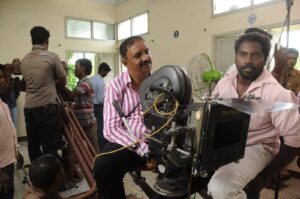
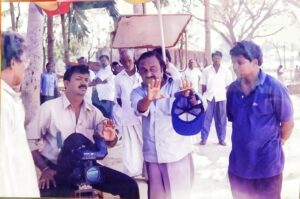
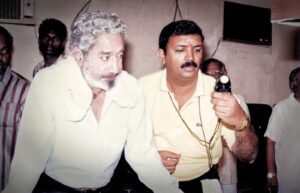
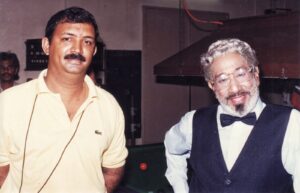
What was the most challenging scene you’ve shot?
One of the most challenging scenes I shot was with Chevalier Sivaji Ganesan. The scene required him to walk from a car into a courtroom in a single shot, transitioning from an exterior to an interior setting. The exterior had an f-stop of 22, while the interior required an f-stop of 4.
Matching the exposure was nearly impossible, so I devised a solution.
I found a way instantly operating aperture while moving camera from exterior to interior i had a small pillar for overlapping point within 3 sec of time i have to pull from f 16 to f4 without deliberation. with long trolley and crane i tried rehersal operation with focus assistant not able to pull exactly to the point .Sivaji sir was ready and director called the shots..with deep breath i decided to operate camera and also pull the aperture ring by myself…and camera rolled and moved up following sivaji and came the pillar overlapping point just my fingers synced very well to pull the aperture ring collided to pullar overlap and smoothly shifting to interior ending up with perfect exposure and composition..after the shot whole set clapped for my operation
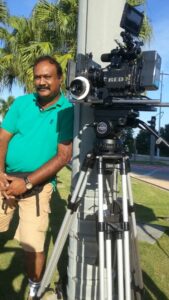
How did your younger brother, Naga Krishnan, enter the field?
My younger brother, Naga Krishnan, worked under me during the early days of his career. As I handled a heavy workload, he gained experience assisting me. Later, he worked with the renowned cinematographer PS Prakash, one of my father’s former assistants, and eventually established himself as an independent cinematographer.
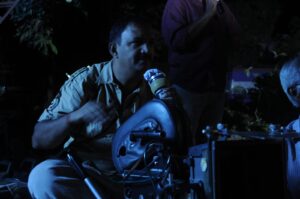
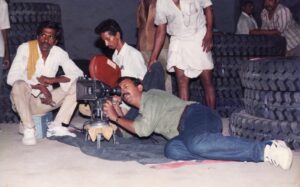
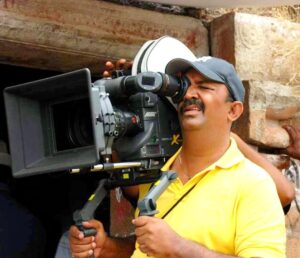
You had been earlier days of Video to Today digital era..what technical balance is required,?
Electronic cinematography demanded a different approach to lighting and exposure. We had to be more precise and meticulous. I focused on creating a more natural and cinematic look, using techniques like selective focus and depth of field to enhance the storytelling,where as today’s Digital sensor has a base iso of 800..controlling light is very important than to add up lights.
What message would you like to give to aspiring cinematographers?
Every project, big or small, deserves your full effort. You never know which project will make a mark. Cinematography is about storytelling through visuals, so treat it as an art form. Stay consistent, innovate, and always believe in your craft.
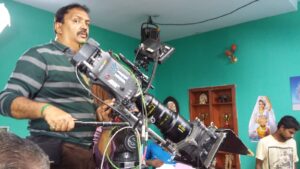
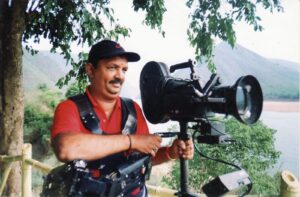
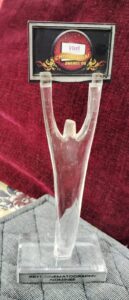
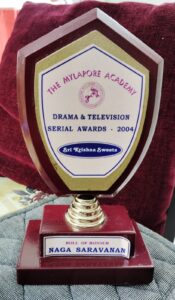
Can you detail about your awards and recognitions?
“My career in cinematography has been a journey filled with learning, innovation, and unforgettable moments. Over the years, I have been privileged to work on 90 serial projects, documentaries and four feature films, each project offering a unique opportunity to explore and push creative boundaries. From working on path-breaking advertisements like Spencer’s Cool Drinks to capturing iconic moments such as Rajinikanth’s political interview for Doordarshan, my work has been a blend of passion and dedication to the art form.
In addition to feature films and television projects, my documentaries, including the one on Ramana Maharishi, hold a special place in my heart as they allowed me to explore meaningful stories and cultural narratives.
I am deeply honored to have been recognized for my contributions to the field of electronic cinematography, notably receiving the Roll of Honour from the Mylapore Academy, presented by the esteemed AVM Saravanan. This recognition, alongside the appreciation from industry legends like Chevalier Sivaji Ganesan, validates my efforts and inspires me to continue striving for excellence.
Through every frame I compose, I remain committed to treating every project with the respect it deserves. After all, we can never predict which work will leave a lasting impact. I hope to inspire the next generation of cinematographers to approach their craft with the same passion, discipline, and innovation that have guided me throughout my career.”
Image representation of Naga Saravanan Project resume

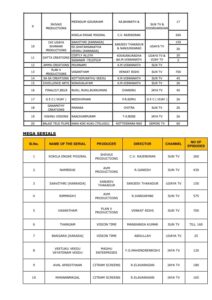
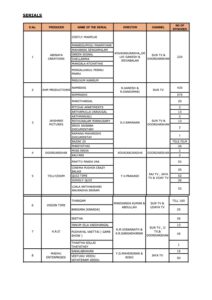
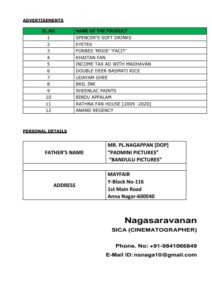
Article by
CJ Rajkumar
Author/ Cinematographer
